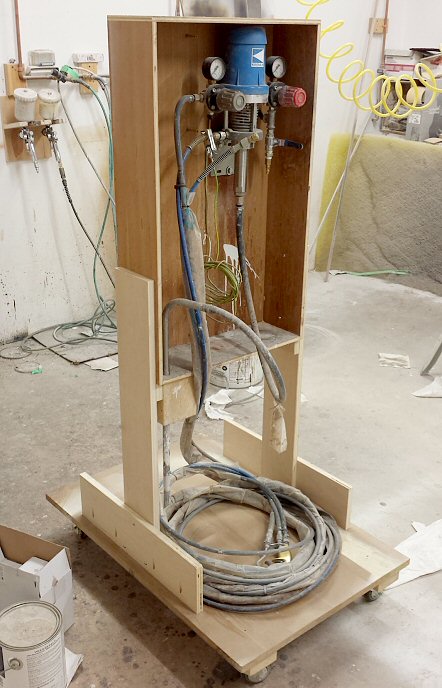Toning Large Panels
Toner applications require many light passes with a consistent, even touch. Light or dark stripes or inconsistent color are an ever-present risk. May 17, 2005
Question
I have a large job of toning panels. I am new at this and am having a hard time getting a consistent finish without lap marks. Any help would be greatly appreciated.
Forum Responses
(Finishing Forum)
From Paul Snyder, forum technical advisor:
If your spray gun is working well (good atomization and even distribution across the width of the spray pattern), try backing off a little and "fogging" it on with enough overlap between passes to get rid of the stripes. Keep each spray pass just wet, don't back off the surface enough to start getting dry spray.
From contributor B:
I like using dyes for this and good spray technique, as Paul suggests. Depending on how dark the stain is, I usually clear coat first, then spray dye on that. After sanding, of course.
From contributor J:
You also might back off on your color concentration and make a couple more passes rather than the quickest route possible.
From contributor D:
By toning, are you talking about stain or a shading lacquer? Often I find that if I am toning with stain, backing off the color strength is usually sufficient, but if I am using a shading lacquer or toner, I prefer to back off the amount of solids by thinning (so as to have less film build, which equals less color, more room for error). Sometimes toning with a washcoat is better than lacquer.
From the original questioner:
Thanks a lot. You have been most helpful. It's nice to know where to go for great reliable info.
From contributor J:
The problem toning large panels is that you have to make consistent, even passes with your spray toner. Too much and you get lap marks, too little and you have light stripes. The reason why you have dark stripes is that for each single application of toner, those areas get in reality two toned passes. Simple remedy is to either turn your fan down and not overlap each pass or avoid this area and tone in the lighter areas on next pass. The other problem deals with air turbulence with toners.
From contributor D:
1. What type of spray setup are you using? HVLP, airless, air-assisted, compressed?
2. Are you spraying from a cup gun, a pressure pot or pump?
3. Are you sizing your fluid needle and adjusting you atomization accordingly for the product you are using?
4. What product are you shading with? Stain, shading lacquer, shellac and aniline stain, a combination of methods?
5. What type of wood are the panels?
6. Are the panels being stained prior to the shading process?
A truly accurate answer for your problem depends on your answers to these and a few more questions. My hat is off to you for wanting to expand your finishing arsenal with the ability to tone/shade your finishes. This will open another realm of colors and effects for you to offer your clients. But you need to take small steps when gaining new abilities. Maybe a large panel job should not have been your first choice to learn this new skill.
From contributor R:
The best way I have found to teach toning/shading is to tape off a 2' square on white melamine and try to tone it an even color. If you have any problems with gun setup or technique, you will see stripes or uneven color. When you can shade the white melamine an overall even color, you will be ready to start on wood panels. A good tip is to use a small fan size and move a lot farther away from your work. When you start shading on wood, make sure you always shade with the grain. That way, if there is a problem, the streaks will go with the grain instead of looking like zebra stripes.
Anytime I do panels, or cabinet doors for that matter, I lay out the entire elevation and shade them all at once. This assures that the panels or doors or doors and drawer fronts all match.
